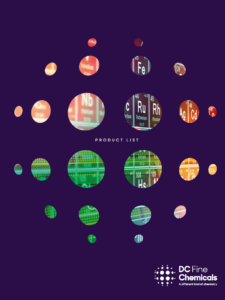Raw Materials for Culture Media in Bacteriology: Additives and Their Roles
Â
Culturing pathogenic microorganisms in the lab plays a crucial role in diagnosing bacterial infections. Louis Pasteur pioneered this practice in 1860 by using culture media in a laboratory setting. By the early 1900s, a wide array of media types had been developed to support diagnostic processes.
Â
Composition of Media:
Agar, a polysaccharide extracted from marine algae, is the most common solidifying agent in microbiological media. Many media formulations include peptone as a nitrogen source. Peptones, which are hydrolyzed proteins created through enzymatic or acidic digestion, are usually made from casein, though other sources like soybean meal are also widely utilized.
Anaerobic pathogens require specialized conditions for growth, so some media incorporate components like thioglycolate to reduce oxygen levels, aiding in the cultivation of anaerobes. Microorganisms often need specific growth factors, including vitamins, amino acids, fatty acids, trace metals, and blood components, which are critical for the successful growth of certain pathogens.
Media often contain selective components that inhibit the growth of unwanted bacteria. Antimicrobials or other selectively toxic compounds are added to suppress background microbiota, enabling the cultivation of the desired organism. Selective toxic chemicals used include bile salts, selenite, tetrathionate, tellurite, azide, phenylethanol, sodium lauryl sulfate, and various dyes like eosin, crystal violet, and methylene blue.
Antimicrobial agents such as ampicillin, chloramphenicol, colistin, gentamicin, and nalidixic acid are used to suppress specific microorganisms. Some media contain ingredients that allow for the differentiation of pathogens based on key metabolic reactions, such as the production of acid from carbohydrates or the decarboxylation of amino acids. Indicators are included in some media to visually detect pH changes resulting from these metabolic reactions, and chromogenic dyes are used in several media to indicate specific enzymatic reactions.
Â
Medium Additives:
Many media contain specific additives that range from selection and differentiation to the protection of certain bacterial species. Commonly used media additives include:
- Albumin: Protects against toxic by-products and binds free fatty acids.
- Antibiotics: Added to confer selectivity to the medium.
- Carbohydrates: Serve as an energy source and are used in combination with an indicator to differentiate media.
- Dextrose (Glucose): Creates a hypertonic environment and serves as an energy source.
- Ferric Ammonium Citrate: An iron salt used with other agents like esculin and sodium thiosulfate to create differential media producing a black precipitate.
- Glycerol: A purified alcohol and rich carbon source used in culture, transport, and storage medium reagent preparation.
- Horse Serum: An enrichment used in growth media for organisms such as Mycoplasma and Ureaplasma.
- Lithium Chloride: A selective agent that inhibits microorganisms.
- Malachite Green: A dye that partially inhibits microorganisms.
- ACES: Provides optimal pH buffering capacity without bacterial inhibition.
- NAD (V Factor): Essential for the growth of some fastidious organisms.
- Peptones: A carbohydrate-free nutrient source.
- Rabbit Blood: Enhances pigment production in anaerobes and is an additive to heart infusion agar for the isolation of Bartonella spp.
- Sodium Azide: Inhibits gram-negative organisms.
- Sodium Bicarbonate: Used as a neutralizing agent with gastric wash or lavage specimens for recovering acid-fast organisms.
- Sodium Bisulfate: Acts as a disinfectant, antioxidant, or reducing agent.
- Sodium Chloride: Maintains osmotic equilibrium and can be a selective agent at high concentrations.
- Sodium Citrate: Inhibitory to various organisms.
- Sodium Deoxycholate: A bile acid salt that inhibits gram-positive and spore-forming organisms.
- Sodium Pyruvate: A growth stimulant.
- Sodium Selenite: Inhibits coliforms.
- Sodium Thioglycate: A reducing agent.
- Starch: A polysaccharide and detoxifying agent incorporated into some media as a differential agent.
- Tween 80 (Polysorbate 80): An oleic acid ester that stimulates growth, provides fatty acids, and acts as a dispersal agent.
- Vitamin K: Required for optimal growth of certain obligate anaerobes, such as the Bacteroides group.
- Yeast Extract: Provides B vitamins and protein and is water-soluble.
Â
At DC Fine Chemicals, we understand that microbiology requires a selection of specific products for the cultivation, differentiation, and examination of microorganisms. The outcomes of pharmaceutical microbiology are largely determined by the quality and specificity of the employed tools and reagents.
Â
Â
Article written by Sherry Cacay, Marketing Manager of DC Fine Chemicals
Â
Explore Our Microbiology Product List
Â

Tapioca Resistant Dextrin Powder
Non Gmo Resistant Dextrin,Organic Resistant Dextrin,Resistant Dextrin Tapioca Fiber,Resistant Dextrin GI
Qingdao Bailong Huichuang Bio-tech Co., Ltd. , https://www.sdblcycn.com